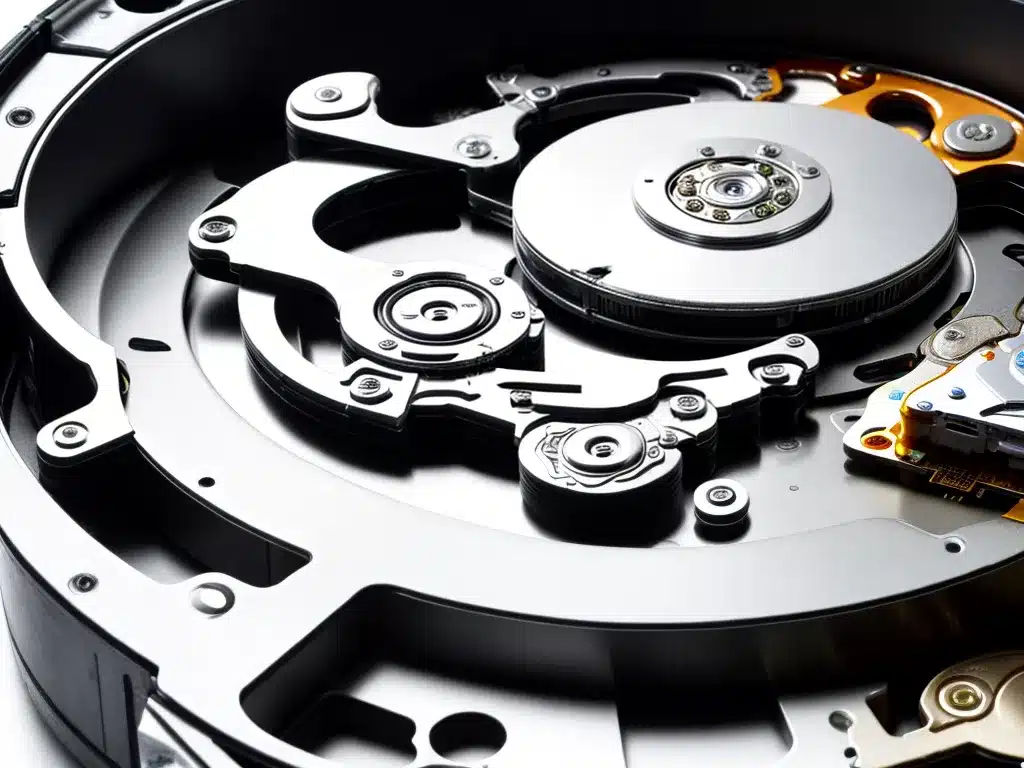Introduction
Recovering files from a failed or failing internal hard drive can seem daunting, but with the right tools and techniques, the process is very doable. As someone who has gone through this process many times, I want to share my knowledge to help others through this difficult situation.
While data recovery software provides an option for recovering files, opening up the hard drive and connecting it to another computer as a secondary drive can be a more effective method. This allows you to access the drive directly and recover data manually.
Throughout this article, I will cover the step-by-step process I use for recovering files from a faulty or failed internal hard drive. My goal is to provide you with actionable advice to assist you in recovering your precious photos, documents, and other important files.
Step 1: Remove the Hard Drive from the Computer
The first step is to physically remove the hard drive from the computer or laptop. This requires opening up your machine and locating the hard drive. Most modern hard drives follow standard form factors like 3.5” or 2.5” drives.
- For desktop computers, you’ll need to open the case and locate the 3.5” hard drive, which is often secured in a drive bay with screws.
- For laptops, you’ll need to remove the bottom panel and locate the smaller 2.5” hard drive, which may be secured by screws or a plastic bracket.
Refer to a teardown guide for your specific computer to see exactly how to access the hard drive. Just be very gentle when handling the old drive, as you don’t want to damage it further.
Step 2: Connect the Hard Drive to a Working Computer
Next, you need to connect the faulty hard drive to another working computer. This allows you to access the drive just like any secondary storage drive.
You essentially have two options for connecting the drive:
-
Use an external hard drive enclosure or adapter. This converts your internal drive into an external drive that connects via USB or eSATA. You can pick up a simple hard drive enclosure for around $10-15.
-
Connect the hard drive directly inside a desktop PC. You can install the hard drive into an open drive bay, securing it with screws. Then use SATA data and power cables to hook it up to the motherboard.
The main thing is that your computer needs to recognize the faulty hard drive when it boots up. Once connected, the drive should appear in File Explorer or Finder as an available disk.
Step 3: Run Data Recovery Software
With the faulty drive connected and accessible, you can now scan it for recoverable data. This step usually involves using data recovery software.
Some options to consider:
-
Recuva – Free data recovery utility for Windows. Provides a deep scan to find lost or deleted files.
-
R-Studio – More advanced data recovery software with powerful file recovery features.
-
EaseUs Data Recovery Wizard – Another good freeware choice for Windows-based data recovery.
Run a full scan using your software of choice. This can take several hours to complete, depending on the size of your hard drive. The software will search for files that can be recovered, allowing you to select and restore them to another location.
Step 4: Attempt a Manual File Recovery
If automated scanning doesn’t recover everything, the next step is to manually dig through the hard drive contents. This may allow you to rescue files that the software couldn’t find.
On Windows, you can access the hard drive contents just like you would with any drive. Open File Explorer and click through folders to find your files.
Useful tips for manual file recovery:
-
Focus on crucial file types – documents, photos, emails, etc.
-
Navigate to typical folder locations – Desktop, My Documents, etc.
-
Sort folders by file type to isolate important files.
-
Open folders one-by-one to avoid freezing system resources.
-
Try searching filenames or contents to uncover files.
With patience and effort, you can often recover files through manual searching that software couldn’t find. Just be extremely careful not to overwrite the disk during this process.
Step 5: Extract Files from a Dead Drive
If your hard drive is completely dead and not recognized at all, you’ll need to extract the raw data from the drive platters. This requires specialized data recovery hardware.
Options like:
-
Data recovery specialist services – Ship your drive to a professional recovery company. Expensive but highly effective for valuable data.
-
DIY data recovery tools – Use hardware and software to rebuild drive contents. For advanced users.
-
SpinRite – Utility to repair damaged hard drives and extract data. More affordable DIY option.
While expensive, using a specialist service provides the best chance of extracting data under extreme failure conditions. But DIY methods may be worth trying first for more affordable data recovery.
Concluding Thoughts
Recovering data from a severely damaged hard drive can certainly be challenging. But in most cases, using the right process makes data recovery very possible.
The key steps are:
- Carefully remove the drive from the computer
- Connect it to a working PC as an external or internal drive
- Scan and recover files using data recovery software
- Attempt a manual file recovery through file browsing
- As a last resort, utilize data recovery hardware/services
Stay patient and determined throughout the process, and there’s a good chance you can rescue those precious files and photos from a failed drive. Let me know if you have any other data recovery tips to share!













